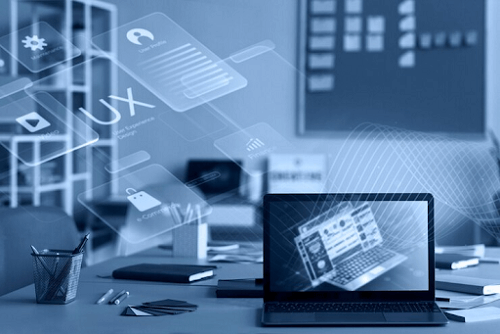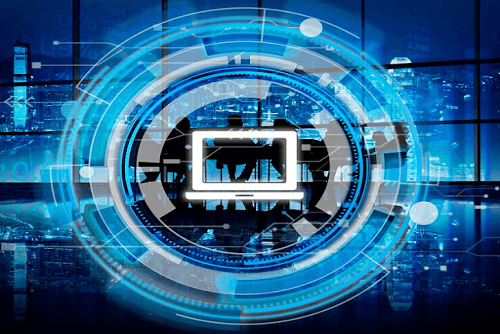IT priorities have to be reevaluated by enterprises due to fast-changing needs. Resilience and security, operational agility, and quick cost reductions are in greater demand. Organizations must streamline intricate online activities and speed up their whole IT infrastructure to fulfill these expectations.
IT modernization can help with it. Several ways modernizing your IT infrastructure might benefit the company. By enabling your company with legacy application modernization services, flexible processes, and trustworthy business analytics, modernization may help you respond faster to the ever-evolving demands of your company.

IT Modernization: What Is It?
The deliberate process of modernizing an organization's information technology (IT) systems, applications, and infrastructure to satisfy the expectations of the digital age is known as IT modernization. To increase effectiveness, security, scalability, and overall performance, it entails using cutting-edge technologies, approaches, and best practices.
Consider IT modernization as a significant remodeling project for the backbone of your company's technology. To improve user experience and simplify operations, it involves updating out-of-date hardware, upgrading software, integrating cloud solutions, and using automation and artificial intelligence.
The transition from conventional on-premise servers to cloud computing platforms is one real-world example of IT modernization. Businesses may save hardware and maintenance expenses, access data from any location, and scale resources according to demand by migrating data and apps to the cloud.
IT modernization is not just a choice in the quickly changing digital world, but also a need for organizations to be robust, competitive, and adaptable in the face of constantly shifting market demands.
Distinguishing Between Digitalization and IT Modernization
Digitalization includes both IT modernization and digitalization. We may categorize these two ideas as follows: using digital technology to track company models and find new income streams.
The application of digital capabilities to assets and business processes is a component of digital transformation. You may use it to execute all organizational and individual procedures related to digitalization.
The goal of IT modernization is to update your antiquated IT setup. It also seeks to enhance your IT environment via upgrades. It addresses issues with agility, security, and efficiency by resolving your company's operating problems.
The most important thing to remember when modernizing your IT is to first assess the benefits you stand to get before updating every asset in your possession. If not, you can encounter a mixed architecture that is entirely disconnected from the infrastructure you are trying to reach.
IT Modernization Examples
Companies often implement these standard IT updates:
ERP System Upgrades
ERP systems, which manage everything from finances to inventories, form the foundation of many companies. Upgrading these systems entails implementing newer software versions that are more in line with the changing objectives of an organization. These changes increase overall corporate productivity, improve data quality, and simplify processes.
Mergers and Acquisitions (M&A)
It is often necessary to integrate and modernize IT systems as a result of M&A activity. Software synchronization during a merger is essential for smooth operations. Technology, data, and process alignment are a part of this process, which guarantees a new, united, effective organization that complies with industry standards.
EDI (Electronic Data Interchange) Updates
EDI systems are essential for handling supply chains and international commercial transactions. Many businesses must still, nonetheless, depend on modern EDI systems. It is essential to update them to newer versions to preserve competitive advantages in international markets. This improves data interchange efficiency, lowers mistakes, and facilitates quicker decision-making.
The Difficulties in Modernizing IT
Businesses need to understand the difficulties associated with IT transformation in the era of digital-first initiatives. The demands of companies operating in the digital sphere are growing more rapidly than anticipated, and their weary IT teams are often managing a large number of conflicting initiatives.
There are situations where perceived urgent demands take precedence over long-term digital transformation plans. Incorporating long-term transformation needs into comprehensive modernization plans is crucial to maintaining process robustness and efficiency during disruptions.
Cloud sprawl management is one of the biggest challenges facing IT transformation. For CIOs, navigating a multitude of apps and online services is becoming more challenging. More and more complicated services are becoming an obstacle for companies looking to streamline operations, save expenses, and boost security.
A McKinsey analysis states that businesses believe they squander thirty percent of their cloud expenditures. Numerous IT professionals and C-level executives have voiced their dissatisfaction with the uncontrollably developing cloud services. This implies that for IT modernization to have the intended impact, creative solutions must be used.

Best Approaches for IT Modernization
When your organization is prepared to invest in IT modernization, you should be sure to consider the following advice.
Steer Clear of Tactical Short-Term Fixes
You may believe that purchasing a program with the necessary functionality is the best course of action when you need a certain capacity. But, if you and your associates adopt this way of thinking over time, your company may soon become overrun by an excessive amount of compartmentalized apps.
Your team should adopt the strategy of taking a step back from a particular application- or process-based problem, identifying the intended future state, and then making choices that will help you get—and stay—there to assist avoid this scenario from occurring.
Continue Using the Old System Until its Replacement Performs as Planned
After your company has identified the system or systems that need modernization, you may begin developing and modifying the new application that will take its place. After it's configured, you may begin transferring data between the two systems while maintaining the functionality of the first.
Give Adaptable, Progressive Technology a Priority
Since many of the solutions on the market are more contemporary and adaptable than their counterparts, they will be able to maintain their relatively greater effect as your company's needs change. You should be able to reduce the overall amount of IT modernization that your company has to complete if you can locate and choose these providers for a variety of technological categories.
Bottom Line
You require modernization if your company's technology is out of date or cannot meet client demands. Modernizing your technology is something that is always going to be necessary; sooner or later, you will have to do it. Your company may expand, locate a new product, attract more clients, and gain market share with the help of IT modernization.
FAQ
1. What is the difference between IT modernization and digitalization?
IT modernization refers to the process of updating and upgrading an organization's existing information technology systems, infrastructure, and applications to improve efficiency, security, and performance. It often involves migrating from legacy systems to newer, more advanced technologies.
Digitalization, on the other hand, is the process of using digital technologies to transform business processes and create new value for customers. It involves the integration of digital technologies into all areas of a business, resulting in fundamental changes to how the business operates and delivers value to its customers.
2. What are some common examples of IT modernization projects?
Some common examples of IT modernization projects include:
-
Upgrading enterprise resource planning (ERP) systems
-
Modernizing legacy applications and infrastructure
-
Implementing cloud computing solutions
-
Adopting agile development methodologies
-
Implementing DevOps practices
-
Automating business processes
-
Improving data management and analytics capabilities
3. What are some best practices for successful IT modernization?
Some best practices for successful IT modernization include:
-
Aligning IT modernization efforts with business goals and objectives
-
Adopting a phased and iterative approach to modernization
-
Prioritizing projects based on business impact and risk
-
Engaging with employees and stakeholders throughout the modernization process
-
Investing in employee training and development to build in-house expertise
-
Continuously monitoring and optimizing modernized systems and processes
-
Embracing a culture of innovation and continuous improvement
4. How can organizations ensure a smooth transition during IT modernization?
Organizations can ensure a smooth transition during IT modernization by:
-
Developing a comprehensive change management plan
-
Communicating the benefits of modernization to employees and stakeholders
-
Providing training and support to employees to help them adapt to new technologies and processes
-
Implementing pilot projects to test new technologies and processes before full-scale rollout
-
Maintaining business continuity during the modernization process
-
Continuously monitoring and optimizing modernized systems and processes
-
Celebrating successes and learning from failures to continuously improve the modernization process
5. What are the long-term benefits of successful IT modernization?
The long-term benefits of successful IT modernization include:
-
Improved efficiency and productivity
-
Enhanced security and compliance
-
Increased agility and responsiveness to changing business needs
-
Better customer experience and satisfaction
-
Competitive advantage through the adoption of new technologies
-
Reduced IT costs and improved return on investment (ROI)
-
Improved employee satisfaction and retention
-
Ability to scale and adapt to future business growth and changes
6. How can organizations measure the success of their IT modernization efforts?
Organizations can measure the success of their IT modernization efforts by tracking key performance indicators (KPIs) such as:
-
Return on investment (ROI)
-
Cost savings and cost avoidance
-
Improved system performance and uptime
-
Reduced security incidents and compliance violations
-
Increased employee productivity and satisfaction
-
Improved customer satisfaction and retention
-
Increased revenue and market share
-
Successful implementation of new technologies and processes
7. How can organizations ensure that their IT modernization efforts are sustainable?
Organizations can ensure that their IT modernization efforts are sustainable by:
-
Adopting a long-term, strategic approach to IT modernization
-
Continuously monitoring and optimizing modernized systems and processes
-
Investing in employee training and development to build in-house expertise
-
Embracing a culture of innovation and continuous improvement
-
Aligning IT modernization efforts with business goals and objectives
-
Adapting to changing business needs and technological advancements
-
Collaborating with external partners and vendors to stay up-to-date with best practices and emerging technologies









